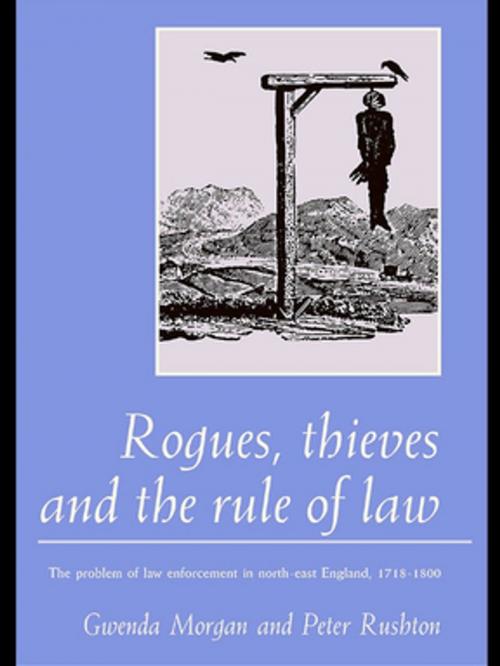Rogues, Thieves And the Rule of Law
The Problem Of Law Enforcement In North-East England, 1718-1820
Nonfiction, History| Author: | Gwenda Morgan, Peter Rushton | ISBN: | 9781135370312 |
| Publisher: | Taylor and Francis | Publication: | July 28, 2005 |
| Imprint: | Routledge | Language: | English |
| Author: | Gwenda Morgan, Peter Rushton |
| ISBN: | 9781135370312 |
| Publisher: | Taylor and Francis |
| Publication: | July 28, 2005 |
| Imprint: | Routledge |
| Language: | English |
Rogues, Thieves and the Rule of Law" is a large-scale study of crime, disorder and law enforcement in northern England in the early modern period. London was not the only city where female criminals were common and gangs were feared, nor was it the sole centre of industrial and political agitation. The north was an area of national significance which supplied the capital with its fuel and whose tendency to industrial insurgence commanded the attention of every 18th-century administration.; Arguing that much of the recent work on early modern crime has focused on London and its surrounding counties, which have wrongly been interpreted as typical of the whole country, this study, in contrast, seeks to place the metropolitan image within the wider context of regional realities. As such, it offers a significant antidote to the picture of excessive brutality associated with London and Tyburn, breaking new ground by encompassing crime in an entire region and at all levels of the judicial system. It uniquely reflects upon gender and crime, the development of transportation, the rise of imprisonment and the convergence of military and civil power, in an attempt to contain an assertive and riotous population in a region remote from central authority.; The north-east had a distinctively violent history before 1700 and retained some of its traditionally wild character in the 18th century. The growing contrasts between urban and rural districts provide a revealing backdrop to the different patterns of crime and official responses. In terms of punishments, the region swiftly followed national trends in transportation, but was pioneering in its early use of imprisonment. This study seeks to change the way we think about crime in early modern England.
Rogues, Thieves and the Rule of Law" is a large-scale study of crime, disorder and law enforcement in northern England in the early modern period. London was not the only city where female criminals were common and gangs were feared, nor was it the sole centre of industrial and political agitation. The north was an area of national significance which supplied the capital with its fuel and whose tendency to industrial insurgence commanded the attention of every 18th-century administration.; Arguing that much of the recent work on early modern crime has focused on London and its surrounding counties, which have wrongly been interpreted as typical of the whole country, this study, in contrast, seeks to place the metropolitan image within the wider context of regional realities. As such, it offers a significant antidote to the picture of excessive brutality associated with London and Tyburn, breaking new ground by encompassing crime in an entire region and at all levels of the judicial system. It uniquely reflects upon gender and crime, the development of transportation, the rise of imprisonment and the convergence of military and civil power, in an attempt to contain an assertive and riotous population in a region remote from central authority.; The north-east had a distinctively violent history before 1700 and retained some of its traditionally wild character in the 18th century. The growing contrasts between urban and rural districts provide a revealing backdrop to the different patterns of crime and official responses. In terms of punishments, the region swiftly followed national trends in transportation, but was pioneering in its early use of imprisonment. This study seeks to change the way we think about crime in early modern England.















